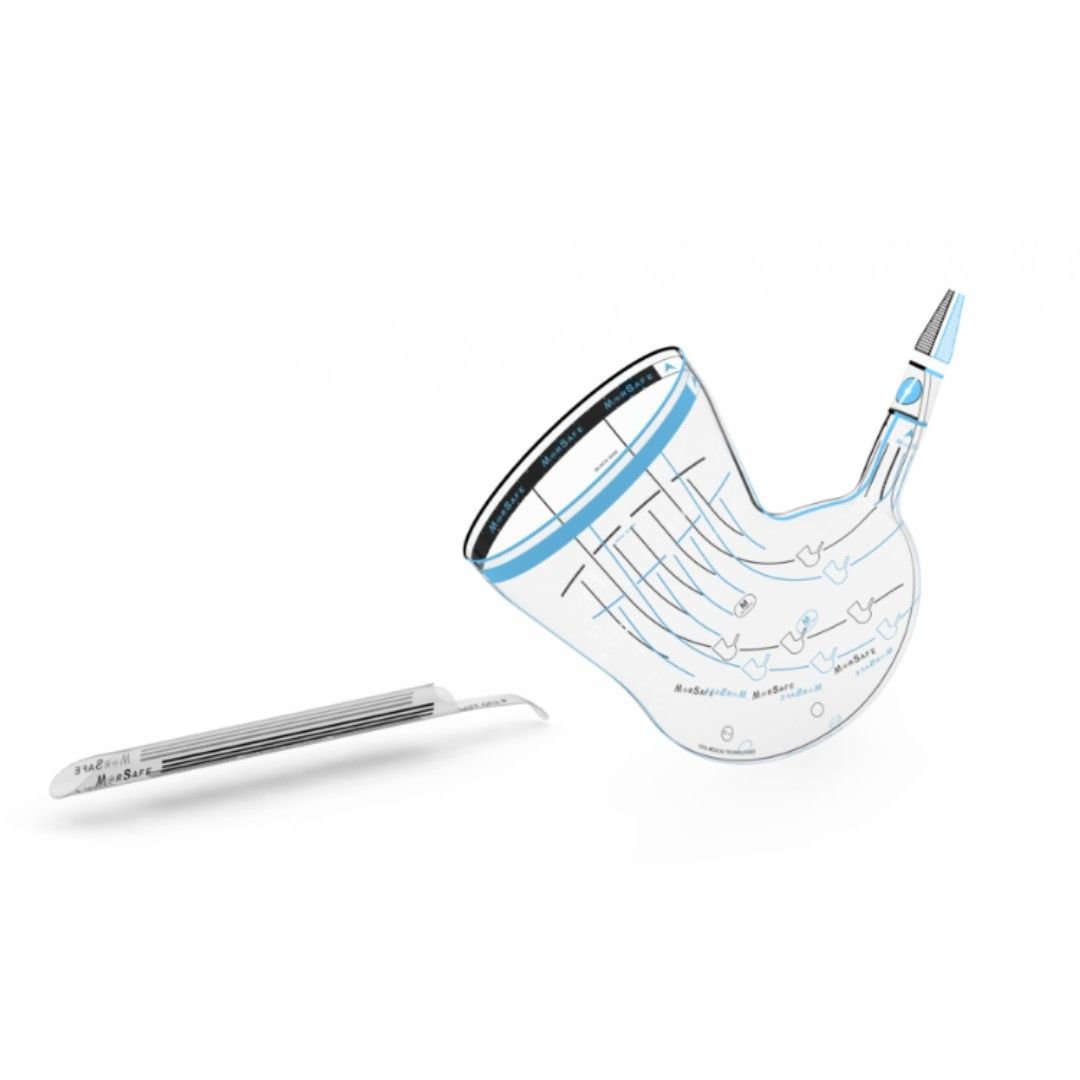If you work in the medical field involved in laparoscopic surgeries, you likely know there are many important components that make the procedure flow correctly. One such component is the tissue morcellation bag, which can enhance the efficiency and safety of the procedure. In this blog post, we’ll provide an in-depth look into tissue morcellation bags, including their benefits, criteria to choose, how to use, maintenance, and new innovations in the technology.
Types of Tissue Morcellation Bags
Tissue morcellation bags, also known as tissue retrieval systems (TRS), come in many different types. Two of the most common variations are open and closed devices. Here is a brief overview of each type:
- Open tissue morcellation bags: Open tissue morcellation bags have a distinct open top that allows the surgeon to introduce the specimen into the bag manually. Open bags are typically secured with a drawstring or tie after the specimen is placed inside.
- Closed tissue morcellation bags: Closed tissue morcellation bags have a narrow slot or opening that allows the surgeon to insert the morcellator into the bag for tissue extraction. Tissue is placed in the bag during the procedure, and the bag is closed securely before the morcellator is inserted.
Benefits of Tissue Morcellation Bags
From increased efficiency to improved safety, the advantages of using tissue morcellation bags in laparoscopic surgeries are numerous. Here are some of the key benefits:
- Enhanced Safety: Tissue morcellation bags reduce the risk of contamination and trauma by confining the tissue within a secure containment system. This helps prevent the spread of dormant cancerous cells and reduces the risk of damaging surrounding tissues.
- Improved Efficiency: Tissue morcellation bags significantly streamline the entire surgical process by introducing a quick and efficient means of handling and extracting specimens. This helps prevent additional surgical sessions and reduces operative time, leading to speedier patient recoveries.
- Increased Convenience: When compared to manual specimen management, tissue morcellation bags provide a more convenient and efficient alternative. Bags allow for a smaller tissue size and a more organized specimen retrieval process.
- Versatility: Tissue morcellation bags are designed to accommodate various types of tissue, organs, and surgical debris. Their versatility makes them adaptable to a wide range of surgical procedures, offering consistent and reliable performance.
Tissue Morcellation Bags In Enhance Surgical Precision and Safety
- Containment of Tissue: Tissue morcellation bags are used to safely contain and extract tissue during laparoscopic surgeries. By securely enclosing the tissue within the bag, the risk of tissue fragmentation and potential spread of cells into the abdominal cavity is minimized. This containment helps to ensure accurate tissue removal and reduces the risk of complications.
- Improved Visualization: The use of tissue morcellation bags allows for improved visualization during the surgical procedure. The transparent nature of these bags enables surgeons to have a clear view of the tissue being morcellated, ensuring precise and controlled dissection. This enhanced visibility facilitates accurate tissue removal and reduces the chances of unintentional damage to surrounding structures.
- Facilitates Extraction: Tissue morcellation bags simplify the extraction of large tissue specimens through smaller incisions. The bag enables the surgeon to break down the tissue into smaller fragments, which can then be easily removed through small laparoscopic ports. This minimizes the need for larger incisions, leading to reduced postoperative pain, shorter recovery times, and improved cosmetic outcomes.
- Minimizes Contamination: By containing the tissue within the bag, the risk of contamination from tissue remnants or cells spreading within the surgical field is significantly reduced. This helps to maintain a clean and controlled surgical environment, reducing the chances of postoperative complications such as infection or tumor dissemination.
Overall, tissue morcellation bags provide surgeons with a safer and more precise means of removing tissue during laparoscopic procedures. They offer improved visualization, controlled tissue extraction, and reduced risks of complications, ultimately enhancing surgical outcomes and patient safety.
Criteria to Choose Tissue Morcellation Bags
Choosing the right tissue morcellation bag is vital for ensuring efficient and safe laparoscopic surgeries. Several factors should be considered when selecting a tissue morcellation bag, including:
- Bag Size: Choosing the appropriate size is necessary as it directly relates to the size of tissue to be extracted during surgery.
- Material Quality: The bag should be made of high-quality, durable material that is resistant to tears, punctures, and accidental spillage.
- Open or Closed Bags: Consider which type of bag matches the surgical procedure in question.
How to Use a Tissue Morcellation Bag
Although each manufacturer may slightly differ in how their tissue morcellation bags should be used, the basic process remains the same:
- Open or secure a closed tissue morcellation bag.
- Place tissue fins into the tissue morcellation bag.
- Use the morcellator to extract the tissue.
- Close the tissue morcellation bag.
- Withdraw the morcellator from the bag.
- Remove the tissue morcellation bag from the body.
New Technologies and Innovations in Tissue Morcellation Bags
As professionals in the medical field continue to seek ways to improve patient outcomes and surgical efficiency, new technologies and innovations in tissue morcellation bags are being developed. Some of the latest trends include:
- The introduction of disposable tissue morcellation bags, which can improve overall surgical efficiency while minimizing surgical waste.
- Self-sealing technology, which reduces the risk of leakage, contamination, and infections due to uncompromised self-sealing mechanisms .
- Bag designs that incorporate 3D mesh systems to facilitate better handling of tissue structures.
Leading Manufacturer of Tissue Morcellation Bags
Veol Medical Technologies Pvt. Ltd.
Introducing the MorSafe – Tissue Morcellation Bag by Veol Medical Technologies Pvt. Ltd. This cutting-edge product revolutionizes minimally invasive surgical procedures like myomectomy and hysterectomy with its advanced features and superior design.
Engineered to provide a contained system for morcellation, MorSafe reduces the risk of intraoperative tissue dissemination, ensuring enhanced surgical outcomes. Its unique shape conforms to the abdominal cavity for optimal performance, while distinctive markings facilitate easy identification and positioning during the procedure.
Featuring a two-port design with separate morcellation and camera ports, MorSafe offers efficient use and precise visualization of surrounding tissue. The transparent material allows for clear visualization, while the self-opening design facilitates convenient insertion.
Available in three different sizes, MorSafe caters to individual surgical needs, providing a closed system that creates sufficient operative space and acts as a barrier between targeted tissue and non-targeted abdominal content, minimizing damage and reducing the need for rigorous washings post-morcellation.
With its focus on patient safety, MorSafe minimizes the risk of complications such as dissemination of tissue fragments and blood, ensuring better outcomes for patients. Trust in Veol Medical Technologies Pvt. Ltd. to deliver top-of-the-line morcellation bags that meet the highest standards of quality and performance, making MorSafe the preferred choice for surgeons worldwide.
Conclusion
Tissue Morcellation Bags are a vital aspect of laparoscopic surgeries, and they offer many benefits when appropriately utilized. They provide numerous advantages, including enhanced safety, improved efficiency, increased convenience, and versatility. In selecting the right tissue morcellation bag, you must consider the size, quality, and open or closed aspect of the bag. Overall, taking care of the tissue retrieval system bag and being aware of the latest innovations is vital to ensure that your surgical procedures remain efficient and safe.



